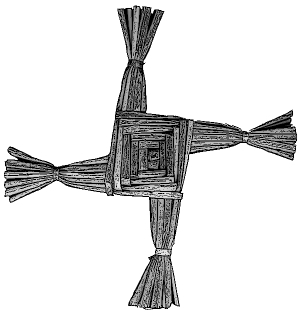Irish Government Aims To Make St Brigid's Day National Public Holiday from 2023

The Irish Government is reported to be working on a proposal to establish a new bank holiday for St Brigid’s Day on 1 February. The St Brigid’s Day bank holiday is to be permanent and to take effect in 2023. Saint Brigid (Irish: Naomh Bríd) is one of Ireland's patron saints, along with St Patrick and St Colmcille and is the only woman patron saint. There has been a debate for many years on the origins of Brigid. She shares her name and a number of the same attributes as the Celtic goddess Brigid. There are many supernatural events, legends, and folk customs associated with her.
St Brigid's Day falls on 1 February and marks the first day of spring in the Gaelic calendar. It is held midway between the Winter and Spring Equinox and has been celebrated by the Irish long before Ireland was a Christian country. It is believed to have celebrated the pagan goddess Brigid, and was also known as Imbolc, one of four Gaelic seasonal festivals. The other three being Bealtaine, Lughnasadh and Samhain.
In the Christian tradition Brigid was said to have been born into slavery in Dundalk in the year 451 AD. Brigid is described as having been the daughter of a woman who was one of Ireland's first Christians. Her mother having been baptized by Saint Patrick himself, whilst her father was a wealthy pagan. Brigid is said to have been sold into slavery. However, eventually her holiness and generosity was finally recognised.
She was set free from servitude and is described as having helped spread Christianity in Ireland with many miracles being attributed to her. She would go on to found several monasteries and a convent in County Kildare. Legend has it that the town of Kildare was built around this convent. St Bridget is also venerated in other of the Celtic countries. In Scotland, East Kilbride and West Kilbride are called after Brigid. Lhanbryde, near Elgin, Scotland is thought to be Pictish for "Church of Brigid". In the Isle of Man, the Manx form of the name, Breeshey is common. The parish of Bride on the Island is also named after the saint. In Wales a number of villages are named after her using the word "Ffraid" or "Ffraed" which is the Welsh for "Bride".
There are a number of traditions associated with St Brigid that have continued to be followed for many hundreds of years. One of the most famous being the making and placing of the Saint Brigid's Cross. It is a unique cross made from fresh rushes or reeds. They are believed to bring good luck and offer protection. People do not appear to have a problem combining Christian beliefs with older pagan beliefs when seeking the help and making offerings to Brigid.
Image: Brigid's cross.





